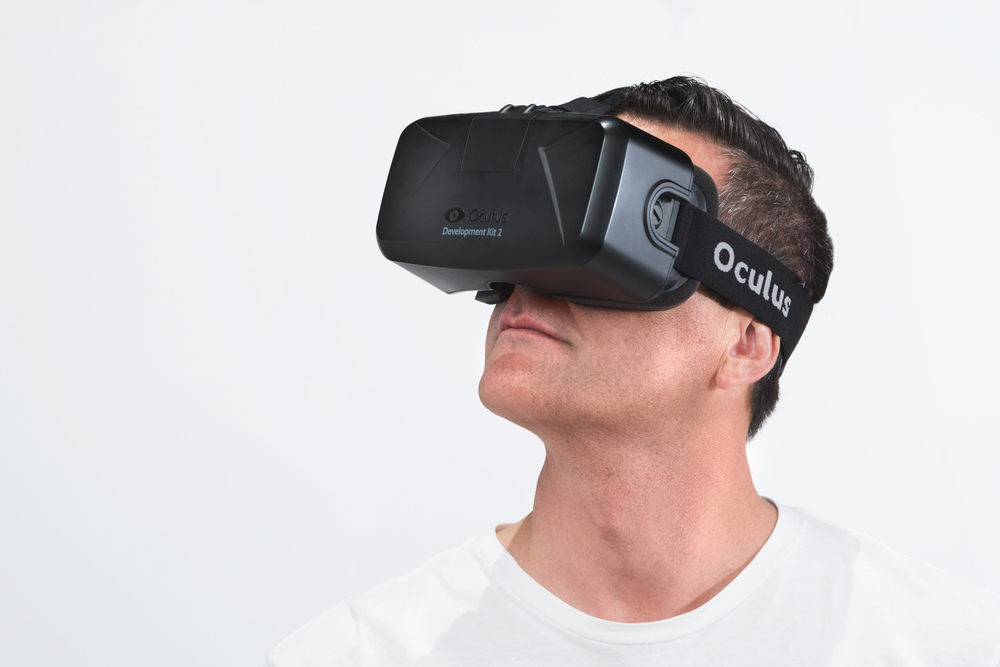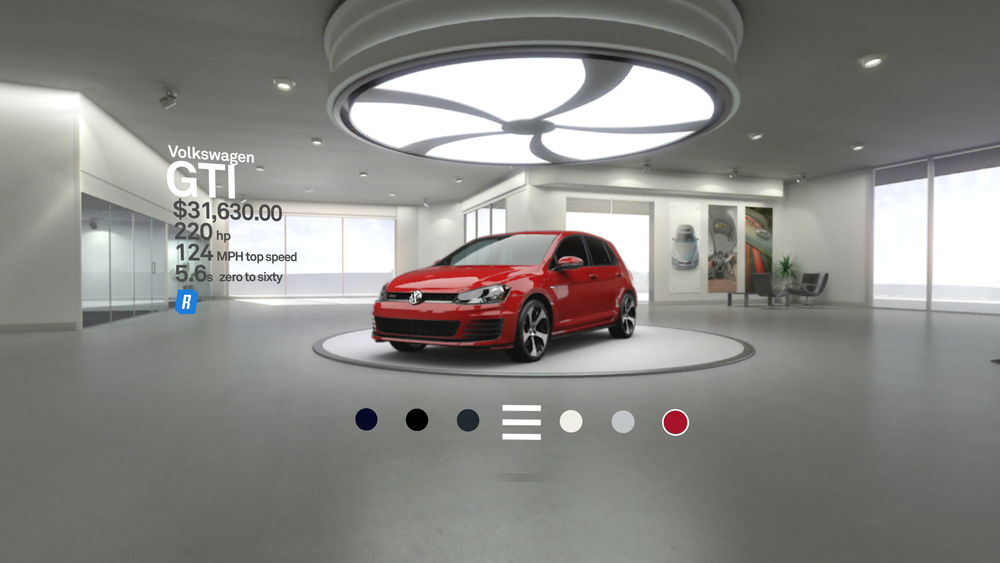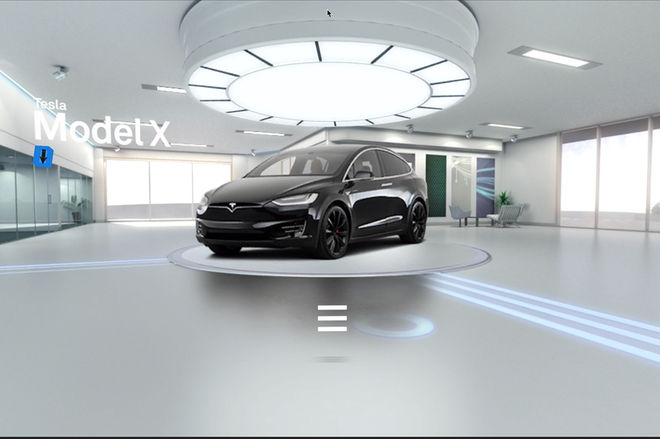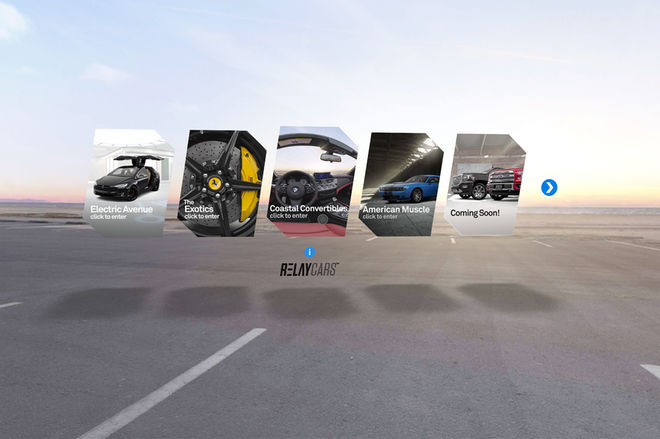July 21, 2016
NEW STUDY SAYS PEOPLE ARE MORE LIKELY TO BUY FROM BRANDS THAT USE VIRTUAL REALITY
// ADWEEK
Medium Makes them Seem Modern
BY MARTY SWANT | July 20th 2016
Brands trying out virtual reality as part of a marketing strategy might be wary about whether spending on the emerging platform is worth it. But new research suggests the investment could be paying off in brand affinity and increased purchases.
Greenlight VR released results this week from its survey of 1,300 adults that found the majority of consumers—71 percent of them—feel that VR makes brands seem “forward-thinking and modern.” However, there’s even better news for brands’ bottom lines: 53 percent of respondents said they’d be more likely to purchase from a brand that uses VR than from one that doesn’t.

“We’re seeing specific VR activities have unique emotional footprints, offering fascinating insights for those who are considering their VR strategies,” Steve Marshall, SVP of Research and Consulting for Greenlight VR, said in a statement announcing the findings. “For example, among our sample, watching a live broadcast event in virtual reality generates significantly higher ratings of positive emotions such as ‘happy’ and ‘energetic’ when compared with playing a VR video game.”
Even those who have never experienced VR had good things to say about the technology, with 91 percent reporting positive feelings after watching an informational video about it. Among those who haven’t tried VR, 65 percent were interested, 32 percent were surprised at what it could do, 25 percent felt “happy” and 58 percent reported being “amazed.”
Brands in a variety of industries have been trying out virtual reality. Last year, The North Face used a virtual dog-sledding experience to help sell winter coats in South Korea. This spring, during South by Southwest, McDonald’s developed an HTC Vive experience that let users paint their own Happy Meal boxes. And just this month, United Airlines has taken to the road with Oculus Rift headsets to tout its new Polaris business class.
The VR industry could be in the midst of its first $1 billion year, according to a report from Deloitte Global, with around $700 million coming from hardware sales and the rest coming from content.
“Greenlight VR has been researching consumer sentiment toward virtual reality since 2014, and this is our most conclusive study yet, tying together attitudes and intended action with branded experience exposure,” wrote Greenlight VR CEO Clifton Dawson. “If the recent success of Pokemon Go isn’t enough, this data provides concrete evidence to experience marketers who are currently designing for the new experience economy.”
July 7, 2016
RELAYCARS RACES PAST 500,000 GEAR VR DOWNLOADS WITH MUCH MORE PLANNED
// UPLOADVR
by JAMIE FELTHAM • JULY 6TH, 2016
While we don’t officially know how many Gear VR headsets have been sold over the past few months, developers are starting to pass significant milestones with downloads.
Take Evox Images, for example, which told UploadVR that this week its car viewing app, RelayCars, surpassed 500,000 downloads and is well on its way to surpassing 600,000. The piece is a free app in which users can explore realistic models of cars in minute detail, watch videos of them in action, head to virtual showrooms and even take virtual test drives. It’s designed to offer the first true car shopping VR experience, giving customers as much information as possible through VR. It’s not a game as such, but it delivers on the promise of feeling like you’re inside a vehicle.

There’s more to come for RelayCars, too. Evox is soon to add search capabilities for makes and models of trucks to the app, allowing you to easily find what you’re looking for. Later down the line the developer plans to introduce this system across the entire range of vehicles found within the app, with the number of models on display soon to pass 1,000. Hopefully support for other headsets like the Oculus Rift and HTC Vive is also in the cards.
Earlier in the year Oculus revealed that a total of one million people had used Gear VR last April. While that doesn’t mean that many headsets have actually been sold, constant promotions in which the device has been given away with compatible smartphones might mean it’s drawing near. Another free Gear VR app, Bait! also passed the 500,000 mark recently while CCP Games claims to have the top selling app for the device in its popular gallery shooter, EVE Gunjack. We don’t know how many copies of that game have been sold, however.
Still, stats like these are proving that Gear VR is quickly becoming a viable platform for developers to consider and make money on, at least within the confines of the mobile space. Hopefully it won’t be too long before we see larger devices follow suit, since that market is having more trouble supporting itself on sales alone.
Source:
http://uploadvr.com/relaycars-races-past-500000-gear-vr-downloads-much-planned/
VIRTUAL-REALITY HEADSETS ARE COOL, BUT CAN THEY HELP DEALERS BOOST SALES?
AUTOMOTIVE NEWS //
BY JAMES B. TREECE | JULY 4th 2016

I’m sitting in a nondescript conference room with three visitors and Staff Reporter Vince Bond, adjusting the focus on a bulky set of goggles.
Suddenly, I’m in a design studio, watching a Ferrari revolve on a turntable. I’m pulling down its price and specs on a screen to the side, changing its colors from red to silver and then, moving inside, I’m switching the seats from leather to cloth and the shifter from a manual to an automatic. Outside the car again, I look to my right to see a Corvette parked on a platform. At my command, it backs out and a BMW drives up in its place.
Then, I’m in a warehouse looking at muscle cars: Mustang, Camaro, Challenger. Again, I change the colors and the viewing angles, but this time I’m also flipping through a choice of music from the nearby jukebox.
Next, I’m cruising on an open road, watching the telephone poles trot away in the rearview mirror. The images are crisp and detailed, down to the mandatory warning labels on the sun visors.
Welcome to cars in virtual reality.
The other folks in the conference room are from EVOX Images. The company takes photos of 10 to 20 vehicles a week: interiors, exteriors, 360-degree panoramas. You’ve seen their new-car photos on third-party and dealership websites. All vehicles are shot from the same angles to allow bumper-to-bumper comparisons.
Since January 2015, EVOX has been taking 3-D photos as well, building a library to serve the virtual-reality boom it foresees. The goggles that I’m using — actually, a Gear VR headset — take a Samsung Galaxy smartphone, but EVOX doesn’t care whether VR systems use Oculus Rift, Google Cardboard, or whatever. They want to supply the images.
Today, their biggest clients are folks in product development. Internally, that means letting designers review styling changes in 3-D after manipulating images rather than remaking a clay model. Externally, that means easier and less expensive focus groups.
David Weber, EVOX vice chairman, and Pat Hadnagy, vice president of virtual reality, tell of an unnamed automaker that rented the Long Beach (Calif.) Convention & Entertainment Center for two weeks to run a series of focus groups.
The carmaker constructed stages with lighting and curtains to show first one car and then another, with all badging stripped off, to gauge consumers’ reactions. The plan then called for breaking it all down, carting it to a Midwest city and doing it again.
About halfway through, the company realized it would be cheaper to fly 200 Midwesterners to Long Beach than to pack up and move the set.
Their point: 200 fold-up cardboard virtual-reality headsets, similar to one that The New York Times distributed to folks a year or so ago, would have been even cheaper.
The headsets would have allowed for biometric feedback, too. Did a consumer’s pulse quicken just a bit when he saw the redesigned Camaro? In the first 60 seconds, what part of the car did he glance at most often?
EVOX is thinking beyond automakers and designers. Once enough headsets and software are available, why couldn’t dealerships mail out cardboard headsets embossed with the store’s logo and a link to an app that allows a shopper at home to take a virtual-reality tour of the dealership’s new-vehicle offerings?
How soon could this happen? That depends on having more virtual-reality headsets in the hands of consumers. EVOX thinks that might happen in the second half. They hint at a surge if VR headsets become a hit gift for Christmas.
I see potential for virtual reality in auto retailing. The wow and geek factors both are pretty high. But there are barriers to acceptance that go beyond consumer adoption of the technology.
An acquaintance at a California dealership asked for the headsets to help sales. He had just a single, purple unit of the brand’s flagship model.
He thought showing shoppers what it looked like in red might help sell more of the high-ticket vehicle.
But when the EVOX folks asked how it was going, the dealership staffer had to admit that the sales manager had banned the headsets. He wanted the staff to sell what was on the lot, not what was on the virtual-reality stage.
July 1, 2016
VIRTUAL RETAIL(ITY): SNAP ON SOME GOGGLES AND GO CAR SHOPPING
// MOTORTREND
EVOX OFFERS 3D TO HELP AUTOMAKERS DEVELOP, CLINIC, MARKET, AND SELL NEW VEHICLES

BY ALISA PRIDDLE • JUNE 29TH, 2016
Evox Images is positioned to take you on a virtual shopping trip for a new car. Or help designers determine the best headlights and color schemes for a future product. Or offer automakers an easier way to clinic some new vehicles in the works.
The California-based company has a blend of old-school assets and cutting-edge technology that might dovetail with a world ready to embrace virtual reality as the next best way to shop online. Evox was founded in 1995 by an aerospace engineer who wanted to use software for virtual reality in the auto industry. Virtual reality didn’t take off in the ’90s—it made people nauseous—so Evox concentrated on 2D images and over two decades has built a photo library of more than 8,500 vehicles dating back to 2000, said Dave Weber, vice president of sales and marketing. Its 360-degree images are already used by about 22,000 dealer websites.

The company, based in Rancho Dominguez, has five studios and robotic camera setups where each vehicle undergoes about 60 standardized 2D and 3D shots so all show the same angles and features, said Pat Hadnagy, vice president, virtual reality. They can shoot and process images for up to 25 cars a week and add about 650 new vehicles to the library each year. So far about 1,000 have been shot in 3D so Evox is ready when virtual reality takes off. Because they are photo-based, they do not appear cartoony like today’s 3D video games.
Evox created the RelayCars app earlier this year, which has about 20 cars available to view in VR, and the company is preparing to pull in trucks from its vast library. Available from the Samsung Gear VR store, the app has about 480,000 downloads to date.

RelayCars allows car buyers to slap on a pair of VR glasses and view a virtual showroom. A demo with an Android phone imbedded into a headset shows the ability to view a car in a showroom on a turntable that spins to view it from all sides. Click to see it in any of the manufacturer-offered colors. Explore the interior and change it up: switch to a manual transmission or change the color and fabric on the seats. Get pricing and other information from a dropdown menu. Take it for a virtual test drive and listen to the rev of the engine. Click to be transported to a beach to view some convertibles or experience some muscle cars in a warehouse.
Weber sees it appealing to the lease customer who trades in every two years, already knows how his vehicle drives, and wants to view the upgrades for the next model before putting in his order. It is also a solution for the dealer with a small showroom or lot who can give customers a virtual walkaround of a vehicle stored elsewhere.

There are about a million VR headsets in use in the U.S., mostly by video gamers, Hadnagy said. He and Weber are convinced it is poised to go mainstream as the next best way to do online shopping. Facebook CEO Mark Zuckerberg has decided virtual reality is the next step in social media—he bought Oculus Rift to push social media to VT.

Evox is convinced VR’s time has come with a growing number of manufacturers making the googles for as little as $5 for Google Cardboard VR goggles that can be easily folded and distributed. Sony is expected to offer one in time for Christmas which will further increase volumes.
Evox is talking to Detroit automakers as well as clients in Europe to set up licensing deals to use their images and virtual reality capability. The product has applications for automakers, dealers and media for everything from product development, customer clinics and sales to advertising and marketing, Weber said.

An automaker can license a customized version of their showroom that has detail on their products and popups to the location of the nearest dealer.
An automaker in development can have a protected site with their products added to a competitive set to compare headlights or wheels in a crowded showroom.
Using virtual reality in a consumer clinic allows the automaker to gauge reaction to the product using biometric feedback to measure what catches the eye and gauge the emotional response, generating hard data on that all-important first reaction. Weber said there are companies doing parallel research to see how closely a virtual clinic mirrors a real one. Evox also worked with Mini to create some VR films which can be downloaded.
The system also offers a way to provide sales training at the dealership, Weber said.
Source:
http://www.motortrend.com/news/virtual-retaility-snap-on-some-goggles-and-go-car-shopping/
